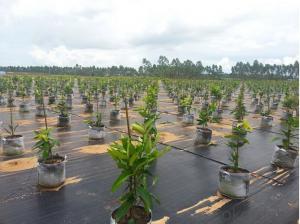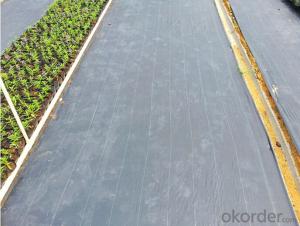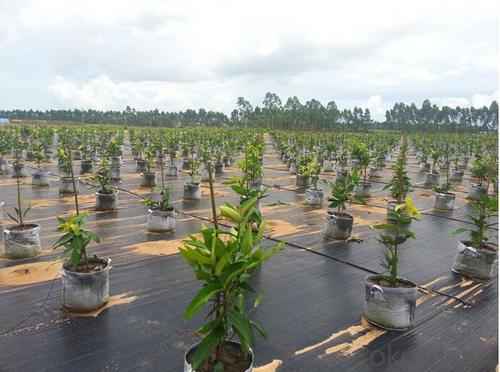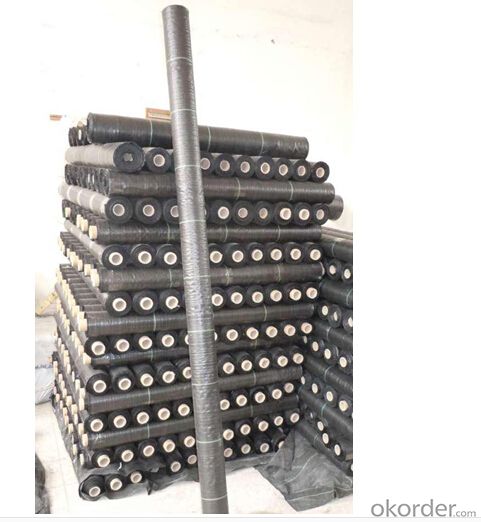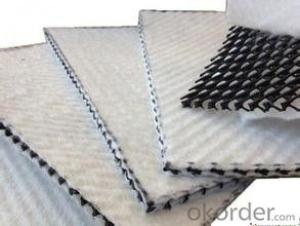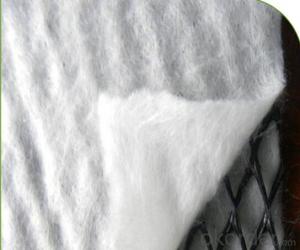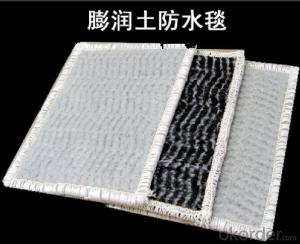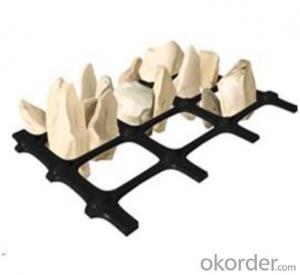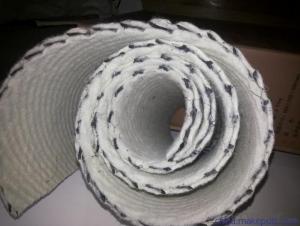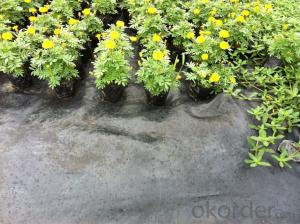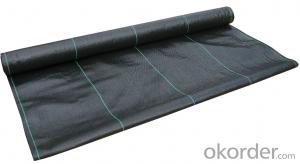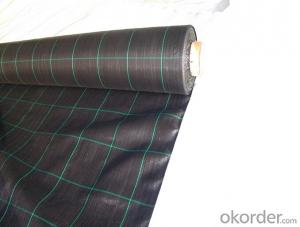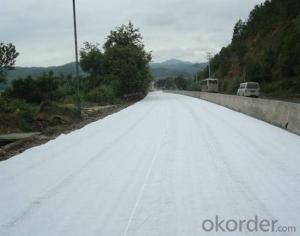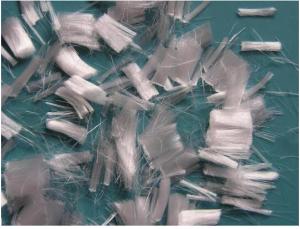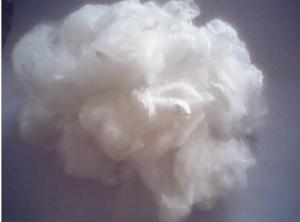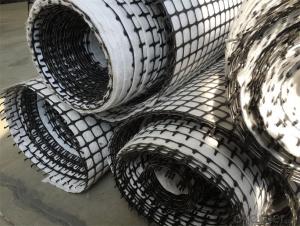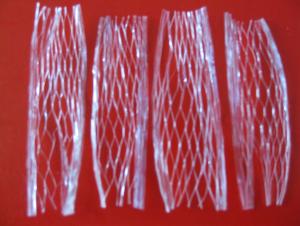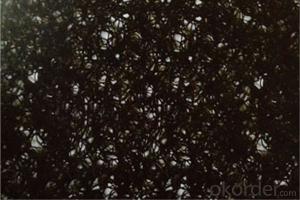PP Woven Geotextile for Anti Weed and Garden Use
- Loading Port:
- Qingdao
- Payment Terms:
- TT OR LC
- Min Order Qty:
- 10000 m²
- Supply Capability:
- 1000000 m²/month
OKorder Service Pledge
OKorder Financial Service
You Might Also Like
Specification
1. Introduction of PP Woven Geotextile
Woven geotextile mainly uses polypropylene(PP),polyethylene(PE) as raw materials. After extruding.It has long term corrosion resistance in the soil and water with different PH;Due to its excellent microbiological degradation resistance. The material is light and soft, so it is convenient to transport and install.
2. Introduction of PP Woven Geotextile
1.Weight | 60gsm-170gsm |
2.Width | 0.6m-5.3m |
3.Roll Length | 5m,10m,20m,25m,50m,100m,200m or as required |
4.Color | Black,Green,Black-green or as required |
5.Weave | 8*8,10*10,11*11,12*12,12*16 |
6.Material | 100% PP material |
7.U.V | With or without U.V |
8.Delivery time | Within 25-35 days after receive prepayment or L/C at sight |
9.Min order | 1 ton |
10.Packing | Each roll with paper core inside and polybag outside or as your request. |
11.Quantity | 10 tons/20'FT, 22tons/40'HC. |
12.Export market | Europe, Australia, U.S.A, Canada, Argentina, The Middle East, Japan and so on. |
3. Application of PP Woven Geotextile
Road Construction .
Embankment on soft soils .
Slope Reinforcement .
Reclamation and breakwater .
Earth/Rock dam and irrigation infrastructures .
Railway and airfield construction .
Sport and athletic field
Anti-weeds
4. Product photo of PP Woven Geotextile
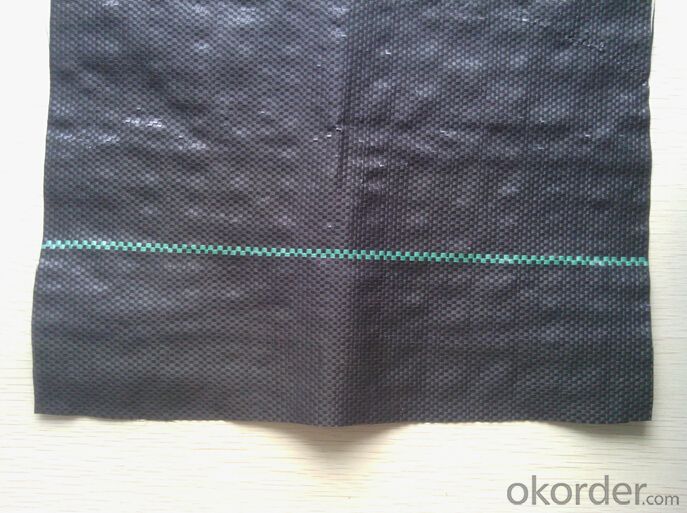
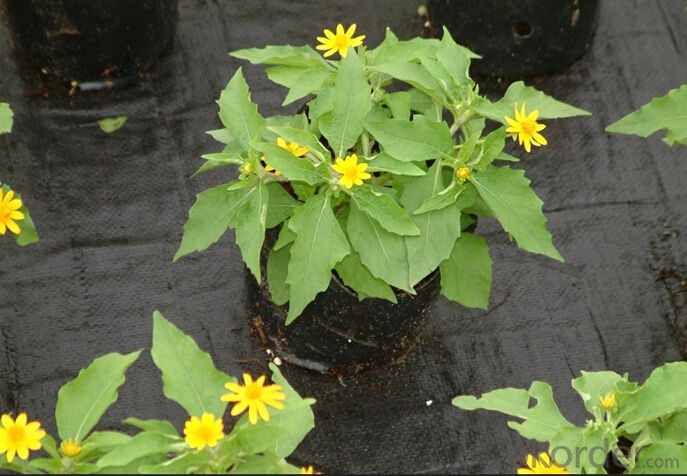
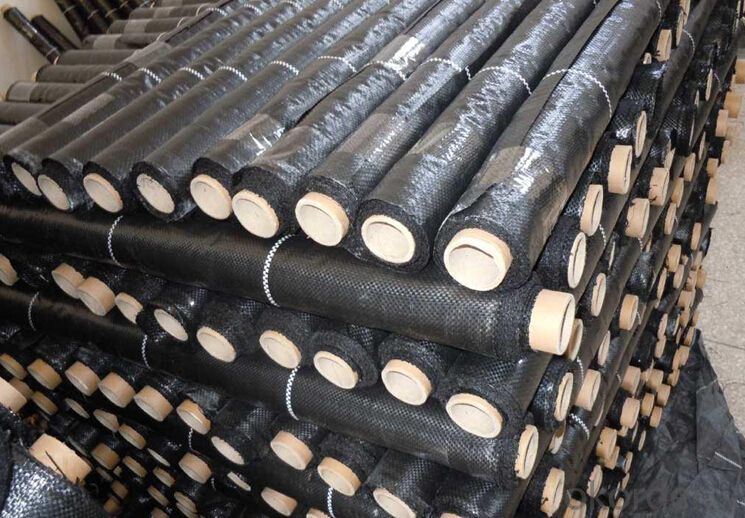
- Q: How are geosynthetic drainage composites used in earthwork applications?
- Geosynthetic drainage composites are commonly used in earthwork applications to provide effective drainage and erosion control. These composites consist of a geotextile fabric and a core material, such as a geonet or geospacer, which allows water to pass through while retaining soil particles. In earthwork applications, geosynthetic drainage composites are typically installed beneath the soil surface to facilitate proper water drainage. They are used in various situations, including road construction, landfill liners, retaining walls, and athletic field construction. By providing a pathway for water to drain away from the soil, these composites help prevent water buildup, which can weaken the soil structure and cause instability. Additionally, they help reduce hydrostatic pressure and the potential for soil erosion, which can be particularly important in areas with high water tables or heavy rainfall. Overall, geosynthetic drainage composites play a crucial role in ensuring the long-term stability and performance of earthwork structures, as they help maintain proper drainage and prevent water-related issues.
- Q: How are earthwork products used in construction?
- Earthwork products, such as soil, gravel, and sand, are commonly used in construction for various purposes. They are used for site preparation, foundation construction, grading, and leveling of land. Earthwork products are also used for creating embankments, backfilling trenches, and filling in areas to provide stability and support. Additionally, they can be used for erosion control, landscaping, and as a base material for roads, driveways, and pathways. Overall, earthwork products play a crucial role in the construction industry by providing essential materials for different construction activities.
- Q: Can earthwork products be used in greenway development?
- Yes, earthwork products can be used in greenway development. Earthwork products such as soil, rocks, and mulch can be utilized to reshape the land, create slopes, and build trails in greenway projects. These materials can help in creating natural and sustainable landscapes that blend seamlessly with the surrounding environment, allowing for the development of beautiful and functional greenways.
- Q: How do geosynthetic products contribute to erosion control in coastal areas?
- Geosynthetic products contribute to erosion control in coastal areas by providing effective solutions to stabilize and protect the soil and shoreline. These products, such as geotextiles, geogrids, and geocells, help to prevent soil erosion and the loss of sediment by creating a strong and durable barrier against the forces of waves, tides, and currents. They function as erosion control measures by reinforcing the soil, improving its stability, and enhancing its resistance to erosion. Additionally, geosynthetic products can be used in combination with other erosion control techniques, such as vegetation or rock armor, to provide even greater protection and long-term stability to coastal areas.
- Q: What is the lifespan of geocomposite drainage systems?
- The lifespan of geocomposite drainage systems can vary depending on factors such as the quality of materials used, installation techniques, and the specific conditions they are exposed to. However, with proper installation and maintenance, geocomposite drainage systems can typically last for several decades.
- Q: Are earthwork products resistant to UV radiation?
- Yes, earthwork products are generally resistant to UV radiation.
- Q: How can geonets be used in landfill projects?
- Geonets can be used in landfill projects to enhance the stability and efficiency of the landfill liner system. They are typically placed between the geotextile and geomembrane layers to provide additional drainage capacity, reduce hydraulic pressure, and enhance soil reinforcement. This helps to prevent the accumulation of leachate and gas within the landfill, ensuring better environmental protection and long-term stability of the project.
- Q: Are earthwork products suitable for use in coastal areas?
- Yes, earthwork products can be suitable for use in coastal areas. These products, such as geotextiles and erosion control materials, can help stabilize the soil, prevent erosion and protect coastal areas from the impact of waves, tides, and storms. They can be used to reinforce dunes, construct seawalls, or create barriers that prevent sediment migration. However, the specific suitability of earthwork products may depend on factors like the local climate, wave conditions, and the type of coastal environment.
- Q: Are earthwork products resistant to freeze-thaw cycles?
- Yes, earthwork products are generally resistant to freeze-thaw cycles. The materials used in earthwork products, such as soil, gravel, and rock, have natural properties that allow them to withstand the expansion and contraction caused by freezing and thawing. Additionally, proper compaction and drainage techniques during construction can further enhance their resistance to freeze-thaw cycles.
- Q: What are the benefits of using geosynthetic clay liners in mining applications?
- Geosynthetic clay liners offer several benefits in mining applications. Firstly, they provide an effective barrier against water and chemical leakage, reducing the risk of contamination to surrounding soil and water sources. Secondly, they have high tensile strength and excellent puncture resistance, ensuring long-term stability and durability in harsh mining conditions. Additionally, geosynthetic clay liners are relatively easy to install and maintain, saving time and costs compared to traditional clay liners. Overall, their use in mining applications promotes environmental protection, enhances operational efficiency, and minimizes the potential for environmental hazards.
Send your message to us
PP Woven Geotextile for Anti Weed and Garden Use
- Loading Port:
- Qingdao
- Payment Terms:
- TT OR LC
- Min Order Qty:
- 10000 m²
- Supply Capability:
- 1000000 m²/month
OKorder Service Pledge
OKorder Financial Service
Similar products
Hot products
Hot Searches
Related keywords
